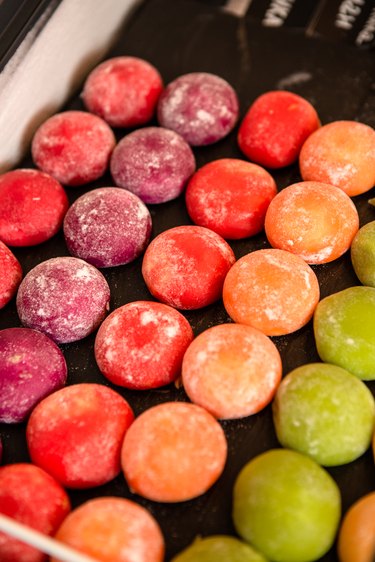
Mochi has always had a special place in my heart. Especially mochi ice cream, i.e., the bite-size Japanese treat that consists of ice cream wrapped in chewy rice dough, aka mochi. It's one of those quintessential treats that just brings to mind my childhood. When I was little, my mother and I lived in Chinese communities around Philadelphia. I grew up surrounded by Chinese culture, other children who looked like me and eateries that served food my mother had grown up with in China's Heilongjiang province. But when I was 9, we moved to the suburbs. Suddenly it was a 30-minute drive to the closest Chinese grocery store (bless you, H-Mart!). So we'd make the trek every two weeks and load up on every conceivable snack and treat that our grocery carts could hold. The trip wasn't complete without my mother buying me red bean and mango mochi ice cream.
In my eyes, mochi ice cream was a kind of East-meets-West dessert: It had the chewy texture of many Asian treats but also contained ice cream, so I could still convince my friends at school to give it a try. It was foreign—but not too foreign. My mom allowed me one confection per night—two if I had gotten an A on an exam or won a tennis match. This mochi-a-night tradition (although not the Mom-imposed portions!) continued into adulthood.
Video of the Day
Video of the Day
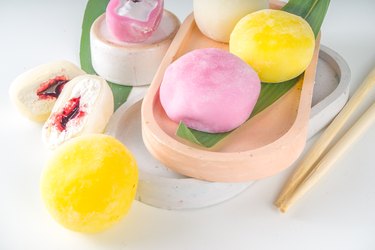
It wasn't until the pandemic, though, when I found myself faced with mochi supply chain issues and plenty of free time, that I decided to research mochi recipes and give them a try myself. What I learned is that this incredible concoction extended far beyond the realm of ice cream—and I instantly became mochi-obsessed, using mochi in recipes ranging from classic mochi buns to mochi donuts and everything in between.
I'm excited to share the many ways mochi can be used in cooking and baking. But before I share some delicious inspo, here's a little overview of the wonder that is mochi...
Mochi 101: What Is Mochi?
Mochi is made from a glutinous, sticky, short-grain rice called mochigome (mochi rice). It contains low levels of amylose (the starch that allows grains of rice to separate once cooked) and high levels of amylopectin, which gives it stickiness. The traditional process for making mochi involves soaking mochigome overnight, steaming it, then mashing and pounding it with wooden mallets (called kine) until it becomes a sticky, gelatinous mess.
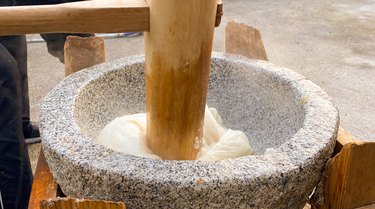
This method, called mochitsuki, is believed to have originated from ancient China and was introduced to Japan at the end of Jōmon period. Historically, making homemade mochi is an important cultural event in Japan that involves two people: One pounding and the other turning and wetting the mochi. It requires a highly coordinated rhythm to avoid injury with the heavy mallets.
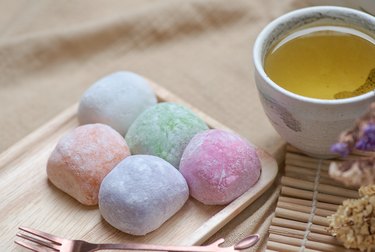
Today, to avoid the laborious prep time of homemade mochi, most people purchase premade and precut mochi. In addition to this mochi paste, mochi has also become an umbrella term for recipes made with glutinous, sweet rice flour. The two most popular types are mochiko flour (you'll see mochiko mentioned several times in our recipe section, so keep this in mind!) and shiratamako flour. Both start with mochigome rice, but mochiko flour mills the washed rice grains dry whereas shiratamko flour grinds the washed rice grains with water, then dries the mixture.
Where Can I Buy Mochi?
Most mochi products can be purchased on Amazon. However, I always encourage folks to patronize Asian grocery stores when possible—whether it’s 99 Ranch, H-Mart, Bokksu Market or a locally owned shop. Here's where to find the mochi that best suits your needs:
Store-bought mochi: Try Kiri Mochi Japanese Rice Cake by Sato Foods
Mochiko flour: Look for Mochiko Sweet Rice Flour by Koda Farms Blue Star
Hiratamako flour: Shiratamako Premium Glutinous Rice Flour by Gold Mark
Fun Ways to Cook with Mochi:
Much like rice, plain mochi is relatively flavorless. This makes it an ideal base to be combined with both savory and sweet ingredients. I look at mochi as a generic gluten-free starch that can be incorporated into any recipe that calls for flour. Additionally, many recipes use mochi as a wrap around a stuffing or filling, making it the perfect on-the-go snack. Here are some intriguing ways to use mochi—both savory and sweet.
1. Plain mochi
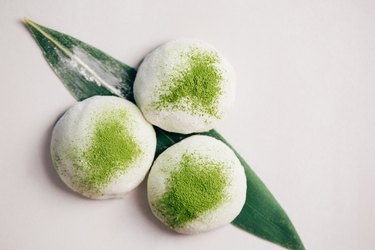
Chi chi dango, bite-size pieces of mochi flavored with any extract imaginable, are about as basic as mochi can get—the batter is made of mochiko flour, sugar, baking powder, water, coconut milk and vanilla extract. Simply pour into a buttered pan, bake, dust with potato starch and slice to enjoy. You can experiment with adding matcha powder, mango juice or ube extract to flavor this chewy snack.
2. Mochi waffles & donuts
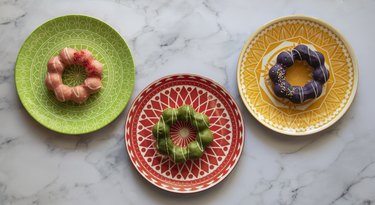
Next up, sweet treats: Mochi waffles and donuts! The glutinous rice flour gives both baked goods a chewy, delicious center with a crunchy, browned exterior. If you're looking to take this route, I recommend trying a mochi waffle recipe first. It's the same process as making normal waffle batter, but mochiko flour is substituted for all-purpose flour. The result tastes close to a Belgian waffle with an ooey-gooey texture.
Mochi donuts take a bit longer to perfect, but the secret is to use a recipe that requires piping out wet batter into a doughnut shape versus rolling individual mochi balls. The latter results in an overly dense, heavy product whereas the beauty of mochi doughnuts is their light, chewy texture. Mix things up with doughnut toppings if you prefer, but I love dusting mine with a simple cinnamon-sugar mixture.
What If I Just Want a Premade Mochi Snack?
If cooking with mochi sounds like a bit too much work but your cravings aren't subsiding, try these delicious store-bought mochi snack options:
- Mont Blanc Mochi Mochi Chocolate: A twist on the traditional Mont Blanc pastry with chocolate-chestnut filling—but the dough is mochi! Think: Ferrero Rocher in mochi form.
- Funwari Meijin Mochi Puffs: Hokkaido Cheese: Melt-in-your-mouth puffs flavored with delicious Hokkaido cheese. If you’re craving sweets, try the Hokkaido Milk flavor.
- Mochidoki Best Sellers Mochi Ice Cream: Are you a fan of unique ice cream flavors? Then you'll love this mochi ice cream, available in flavors like Purple Sweet Potato, Black Sesame and Matcha.
- Yuki and Love Boba Milk Tea Mochi: These mochi come individually wrapped and provide a traditional red bean paste taste with a burst of bubble tea flavor.
- Tamari Teriyaki Sun Tropics Mochi Snack Bites: A delicious savory snack to substitute in place of trail mix or crackers on charcuterie boards.
3. Butter mochi cake
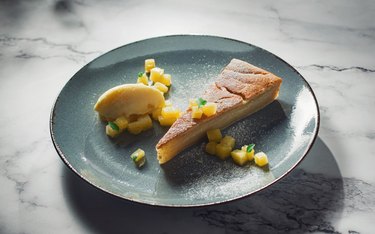
Mochi is a favorite treat in Hawaiian cuisine, which is no surprise given its proximity to Japan. One of Hawaii's best contributions (in my opinion) to the mochi world is butter mochi: a soft, creamy, chewy cake—comparable to a custard with a golden-brown crust. It's incredibly rich and filling because of the copious amounts of butter and milk in the batter. Variations are ample, which adds to the fun. For my butter mochi, I like to include shredded coconut, but you can explore recipes that mix in cocoa powder and chocolate chips for a brownie butter mochi treat.
4. Chocolate strawberry mochi
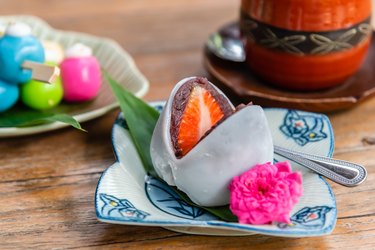
It's hard to go wrong with Japanese strawberry mochi (ichigo daifuku), which stuffs mochi with red bean paste and an entire strawberry. For a more decadent twist, skip the sweet red bean paste and use chocolate-dipped strawberries. When you're working with mochi dough, make sure to use ample cornstarch while setting up your work surface. Mochi is extremely sticky and challenging to handle without a thick coating of starch on your counter or board. The end result with this recipe was an explosion of juicy strawberry flavor, bitter dark chocolate and chewy mochi that balanced out the sweetness. Yum!
5. Mochiko chicken
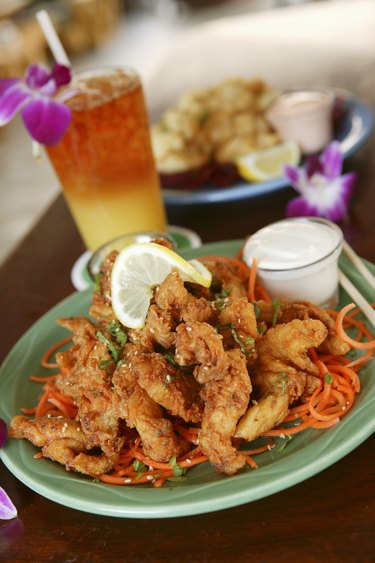
For a savory bite, consider mochiko chicken—a popular Hawaiian dish that's something of a twist on popcorn chicken. Mochiko chicken is fantastic as a movie snack or lunch dish paired with rice and macaroni salad.
Mochiko batter (aka a mochiko flour-based mixture that creates a crunchy coating on fried food, much like classic fried chicken batter) can also be used to fry other meats and vegetables. My favorite go-to uses the batter to create a vegetable pancake of julienned carrots, zucchini and onions. To whip up your own, simply mix vegetables into the batter and scoop ladlefuls to fry on a skillet. It's crispy, chewy and sweet—a perfect way to utilize leftover vegetables.
A Celebratory Treat
In Japan, mochi is considered the "food of the gods." Several Japanese holidays involve mochi—the most significant being the New Year, where mochi is enjoyed in a variety of different preparations alongside a traditional decoration called kagami mochi. This decorative dessert consists of two white, round mochi cakes stacked on top of each other and garnished with a mandarin orange.
6. Isobeyaki
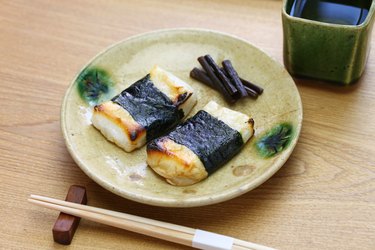
Feeling bored by a plain bowl of white rice? Whip up some isobeyaki mochi rice cakes instead. Start with store-bought mochi and toast it in a toaster. Grilling and frying are also options. Next, season the cakes with soy sauce and furikake and wrap them in dried seasoned seaweed. When I'm in a rush, I'll eat this like a taco with pickled vegetables and/or braised meats tucked into the mochi cake.
7. Mochi buns

Mochi buns are similar to my mochi taco idea. Feel free to use a basic mochi bun recipe and let your imagination run wild with the fillings. Great options include chopped and seasoned wood ear mushrooms, Napa cabbage, carrots, bell pepper, bamboo shoots, beef potato curry, cheesy mashed potatoes with bacon and chives, mashed pumpkin and squash with honey, scrambled eggs and seasoned home fries, or even spicy beef with whole green olives and raisins.
The beauty of mochi buns is that you can literally do whatever you want—so get creative!
8. Veggie mochi balls
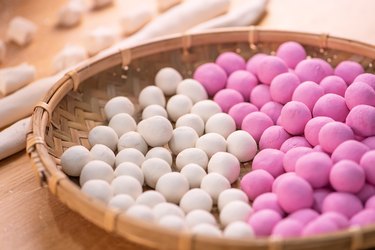
Mochi balls are another basic form of mochi, consisting of mochi flour rolled into spheres with water and boiled until they float. Some people use juice to flavor mochi balls—carrot juice is a popular option. I make various vegetable smoothies with carrot, beet, spinach and kale to mix into my mochi dough. You can either eat the veggie mochi balls as a light, refreshing snack or serve them sautéed on a bed of vegetables. My nieces and nephews love these colorful mochi balls and gobble them up— unknowingly eating their serving of vegetables for the day!
9. Mapo mochi
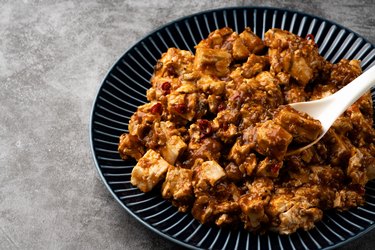
You can also substitute mochi for tofu in your favorite recipes. My favorite is in mapo tofu. This Sichuan speciality combines silken tofu, ground pork and scallions in a spicy sauce made with Sichuan peppercorns. These peppercorns are famous for their distinctive mala, or numbing, effect on the eater. I use diced mochi instead of or in addition to the tofu. Mochi, like tofu, sponges up the spicy flavor of the sauce and provides balance against the heat.
More Mochi Holidays
Other mochi-centric occasions include the springtime celebration of the opening of cherry blossoms, where it’s customary to eat pink red bean paste (anko) mochi wrapped in a salted cherry blossom leaf. On Children’s Day (May 5), Japanese people traditionally celebrate with an anko mochi wrapped with either a kasiwa oak or bamboo leaf. Girl’s Day, celebrated on March 3, means consuming a tri-colored mochi made with mugwort (red coloring), water caltrop (green coloring) and jasmine flowers (white coloring).
10. Mochi pizza
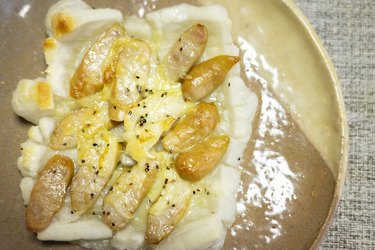
Another creative use for mochi? Pizza crust! That's right: Mochi pizza crust uses a special type of hard mochi called kirimochi or kakumochi that's sliced thinly and spread along the bottom of a cast iron skillet, almost like a crumb pie crust. Cook the crust on a stovetop until brown and bubbling before topping with any pizza ingredients you'd like. One of my favorite flavor combos? Gruyère mushroom thyme (just try to say that three times fast!)
11. Mochi croquembouche
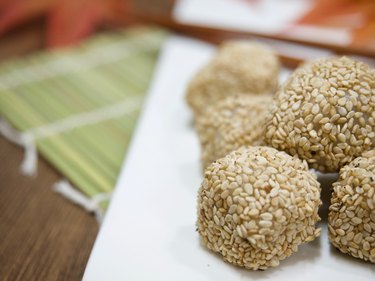
Nothing sounds more celebratory than a giant tower of cream-filled puffs drizzled in caramel—but with a mochi twist! There are many recipes online for fried sesame mochi balls stuffed with red bean paste. Modify a classic croquembouche recipe using French vanilla pastry cream for the filling and construct a tower with sesame-flavored caramel.
12. Mochi grilled cheese
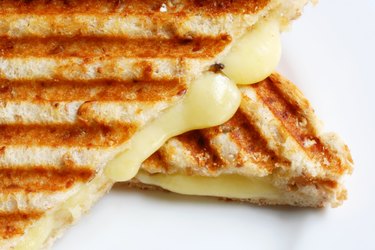
Not much of a chef? Try a mochi grilled cheese! Simply use two slices of store-bought mochi and make a grilled cheese and bacon sandwich with mozzarella or cheddar. It's a satisfying, filling snack that won't take more than 15 minutes to whip up. Yum!
No matter what you choose to make with mochi, you'll soon be head over heels for this versatile and delicious dough. After all, mochi offers a little something for everyone!